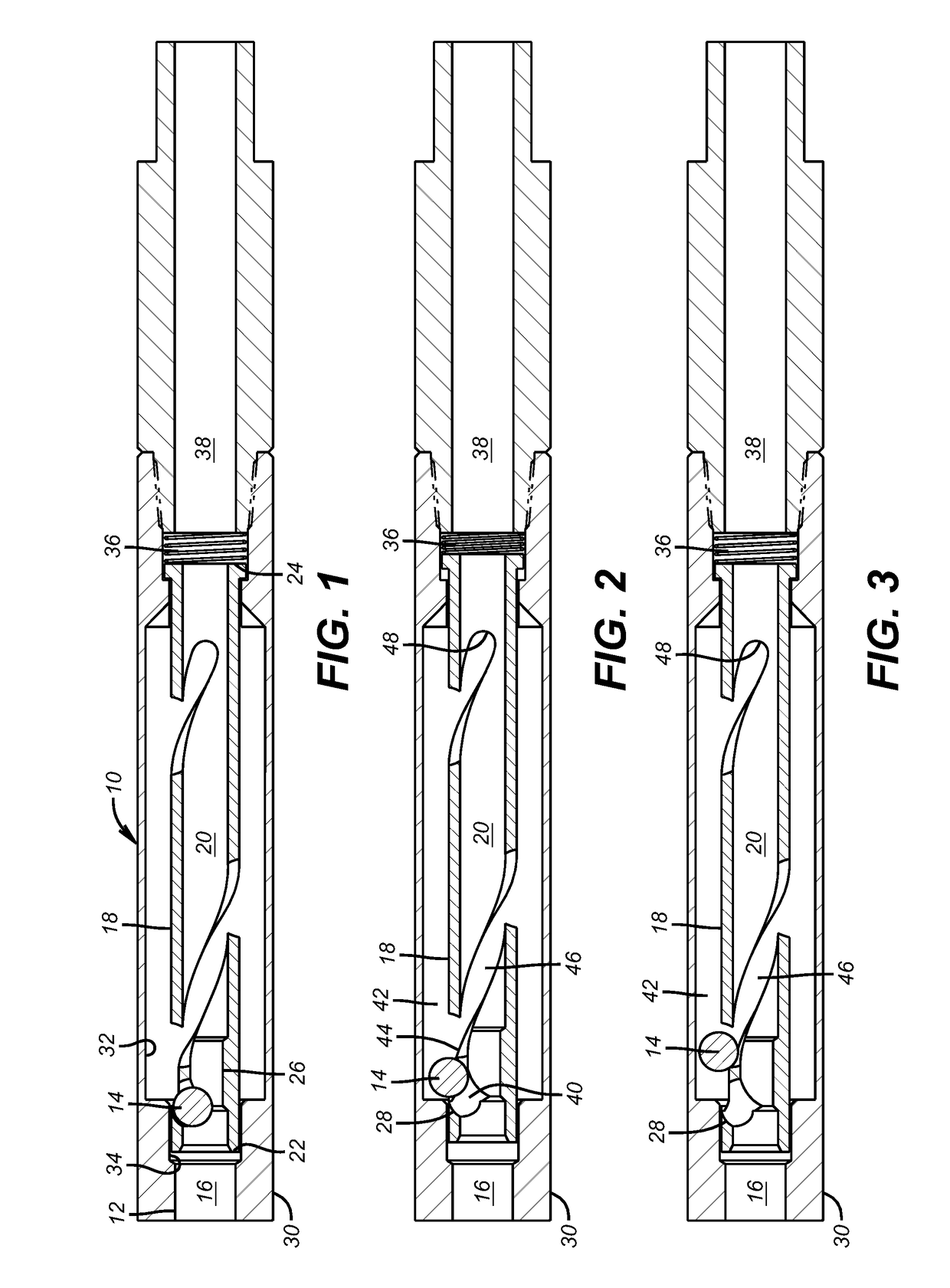Ball catcher with retention capability
a technology of ball catcher and capacity, which is applied in the direction of fluid removal, sealing/packing, and wellbore/well accessories, etc., can solve the problems of preventing subsequent operations, affecting the efficiency of the catcher, and the feature can be less than ideal, so as to maximize the number of balls, increase the differential pressure, and maximize the effect of the annular spa
- Summary
- Abstract
- Description
- Claims
- Application Information
AI Technical Summary
Benefits of technology
Problems solved by technology
Method used
Image
Examples
Embodiment Construction
[0010]The ball catcher 10 has an inlet 12 connected to a tubing string that is not shown. When the ball 14 passes through a ball seat (not shown) that is uphole it continues into inlet passage 16. A movable sleeve 18 has a passage 20 that extends from end 22 at the uphole end to end 24 at the downhole end. Toward the uphole end 22 the passage 20 has a reduced diameter section 26. Adjacent the reduced diameter section 26 is a lateral passage or exit 28 that is best seen in FIGS. 2 and 3 after the ball 14 has gone past. In the FIG. 1 position the housing 30 has a radial surface 32 and a cylindrical surface 34 adjacent and in an uphole direction. The ball 14 goes into the upper end 22 and cannot progress further down passage 20 because of reduced diameter section 26. There is enough room around the ball 14 when it engages reduced diameter section 26 to be pushed laterally against the lateral passage 28. This is the FIG. 1 position. Since the flow continues from inlet passage 16 a press...
PUM
 Login to View More
Login to View More Abstract
Description
Claims
Application Information
 Login to View More
Login to View More - R&D
- Intellectual Property
- Life Sciences
- Materials
- Tech Scout
- Unparalleled Data Quality
- Higher Quality Content
- 60% Fewer Hallucinations
Browse by: Latest US Patents, China's latest patents, Technical Efficacy Thesaurus, Application Domain, Technology Topic, Popular Technical Reports.
© 2025 PatSnap. All rights reserved.Legal|Privacy policy|Modern Slavery Act Transparency Statement|Sitemap|About US| Contact US: help@patsnap.com

